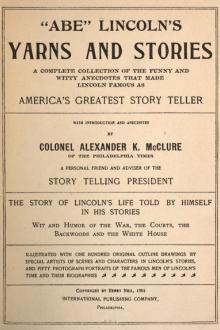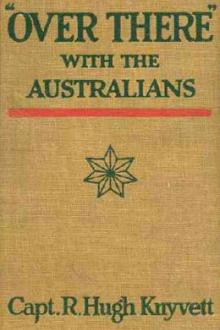Lohgarh - Khalsa Rajdhani, Lohgarh fort - Lohgarh Trust, S. Daljeet Singh Bajwa [early reader books .txt] 📗

- Author: S. Daljeet Singh Bajwa
Book online «Lohgarh - Khalsa Rajdhani, Lohgarh fort - Lohgarh Trust, S. Daljeet Singh Bajwa [early reader books .txt] 📗». Author S. Daljeet Singh Bajwa
Second Attack on Sadhaura Fort by the Mughal Army
In August 1712, Banda Singh Bahadur was present in Lohgarh. When Mohammed Amin Khan got this information, he began his march towards Lohgarh. Before reaching the foothills of the Lohgarh Fort, he had to fight at more than 50 Fortresses and trenches.
On the 1st of September 1712, Jahandar Shah received a letter from Mohammed Amin Khan informing him that “the Sikhs have returned to Sadhaura and established themselves in the Fort there. The Mughal army has surrounded the Fort. The Sikhs come out of the Fortress and fight against the Mughal soldiers. Both the sides have been suffering heavy losses.” On the 17th of August Banda Singh too came to Sadhaura. His army was attacked by the Mughal soldiers. During this battle, the Mughal army suffered heavy losses. Mohammed Amin Khan requested the Emperor to send two cannons so that they might break open the walls of the Fort at Sadhaura.13 On the 8th of September, the Emperor ordered the despatch of two cannons to Sadhaura. Even these cannons could not break the walls of the Fort of Sadhaura. The Mughal siege of the Fort continued for about six months. On the other hand, the Sikhs inside the Fort did not have enough food and ammunition; so, when their food stocks were fully exhausted, on one dark night of winter, the Sikhs came out of the Fort, broke though the siege of the Mughal army and fled to Lohgarh and Nahan.
In the last days of September 1712, some Sikhs went from Sadhaura
to the territory of the Nahan State. The hill soldiers informed General Firoz Jang Khan about the hideouts of the Sikhs; besides, they made a sudden attack on the Sikhs and by that time the ruler of Nahan had
become loyal to the Mughal Emperor. As these Sikhs did not know that the Nahan ruler was a traitor, they suffered heavy losses. So, the Sikhs left Nahan territory. After some time Firoz Jang Khan’s soldiers too reached there but by that time the Sikhs had already moved forward.14 In the early days of October 1712, the Sikhs attacked Chhat (near Banur) and killed a large number of government officials and qazis. The deputy of the Governor of Sarhind was also present there. Instead of fighting, he ran away and reached Sarhind and informed the Governor. The Governor too was scared of the Sikhs so he did not attack the Sikhs; hence, the Sikhs established their control in the area between Sarhind and Lohgarh.15 Thus, within eight months of the death of Bahadur Shah, the Sikhs were now again de facto masters of the area between Lohgarh-
Sadhaura and Sarhind.
Endnotes
Letter written by Bhandari Khivsi (the envoy of Raja Jaipur in the court of the Mughal Emperor) to the Raja of Jaipur, on 10 March 1712, Serial No 57, Vakil Report No (Rajasthani Documents on Banda Singh Bahadur, edited by Dr Balwant Singh Dhillon). Arzdashat (letter) sent to the Raja on 10 March 1712, Serial No 57, Vakil Report No (Rajasthani Documents on Banda Singh Bahadur, edited by Dr Balwant Singh Dhillon). Akhbarat-i-Darbar-i-Mu’alla, entry of 3.1712. Mansab is rank of government official; army pay grade status; g. mansab of seven thousand means he was entitled to keep seven thousand soldiers, and the salary of the soldiers was to be given from State treasury. Akhbarat-i-Darbar-i-Mu’alla, entry of 29 March, 5 and 9 April Akhbarat-i-Darbar-i-Mu’alla, entry of 5.1712. Akhbarat-i-Darbar-i-Mu’alla, entry of 5.1712. Akhbarat-i-Darbar-i-Mu’alla, entry of 5.1712. Akhbarat-i-Darbar-i-Mu’alla, entry of 6.1712 Fateh Shah was the chief of He had attacked Guru Gobind Singh Sahib at Bhangani on 18th of September 1688. In that battle, after heavy
losses, he fled the battlefield and returned to Garhwal. He had grudge against the Mughals, hence he chose to help Banda Singh.
Akhbarat-i-Darbar-i-Mu’alla, entry of 7.1712. Akhbarat-i-Darbar-i-Mu’alla, entry of 7.1712. Akhbarat-i-Darbar-i-Mu’alla, entry of 9.1712. Akhbarat-i-Darbar-i-Mu’alla, entry of 10.1712. Akhbarat-i-Darbar-i-Mu’alla, entry of 10.1712.
Chapter 11
Third Mughal Expedition
Against the Sikhs
Murder of Jahandar Shah : Farukhsiyar Becomes The Emperor Although Jahandar Shah had killed all his brothers and nephews before wearing the crown, one of his nephews, Farukhsiyar (son of Azimushan), was still alive; at that time he was at Patna. On 27 March 1712, he declared himself as new Emperor. Sayyad Hussain Ali Khan was the deputy Governor of Bihar at that time. When Farukhsiyar declared himself as the ‘Emperor’, Hussain Ali Khan was not present at Patna. Farukhsiyar’s mother went to the mother of Hussain Ali Khan and requested her to impress upon her son to help Farukhsiyar in capturing Delhi. She (Farukhsiyar’s mother) reminded Hussain Ali’s mother that it was her husband (i.e. Farukhsiyar’s father, Azimushan) who had played major role in getting high offices for Hussain Ali Khan and his brother Sayyad Abdullah Khan (Kutub-ul-Mulk). When Hussain Ali Khan’s mother did not make any promise for helping Farukhsiyar, she (Farukhsiyar’s mother) began wailing. This created sympathy in the mind of Hussain Ali Khan’s mother and she agreed to help her.1
After some days Hussain Ali Khan too reached Patna. Farukhsiyar and his mother visited him and said, “Either arrest me and send me as a prisoner to Jahandar Shah, or help me in getting the reigns of the Mughal Empire. As and when I get control of Delhi, I shall give the two highest offices to you and your brother, i.e. the office of chief minister and the first noble (Amir-ul-Umra). This way, you will be the real rulers of the Mughal Empire.”2
Although at first Hussain Ali Khan was a bit reluctant but when his mother told him that she had given a word to the mother of Farukhsiyar, he agreed to help Farukhsiyar. Later, Abdullah Khan, who was then the
deputy chief of Allahabad, too agreed to join hands with Farukhsiyar. He was angry with Jahandar Shah because the latter had expressed doubts about his loyalty. When Jahandar Shah came to know about this, he tried to win him back, and, increased Sayyad Abdullah Khan’s mansab from four to six thousands. But, by that time, he had already joined Farukhsiyar’s camp. Jahandar Shah tried to please other officials too; he promoted Mohammed Amin Khan (later, died on 27.1.1721) as Second Bakhshi and Afrasiyab Khan (later, died on 21.8.1718) as Third Bakhshi.3
On the other hand, at Delhi, when Jahandar Shah, on the 20th of October 1712, had received information that his nephew Farukhsiyar had declared himself as the new Emperor, he (Jahandar) had despatched a big army, under the command of his son Azz-ud-Din, to quell his rebellion.4
Now, Sayyad brothers, Hussain Ali Khan and Abdullah Khan, openly declared their support for Farukhsiyar and they led an army to capture Delhi. They reached Shamugarh (near Agra) on the 17th of November 1712. When this news reached Delhi, some generals of the army of Jahandar Shah decided to shift their loyalties; they quietly left Delhi and went to Shamugarh to join Farukhsiyar’s camp. Now, Jahandar Shah did not have enough forces to challenge an attack by the forces of Farukhsiyar; he recruited twenty-two thousand new soldiers and began marching towards Agra.
By this time, Farukhsiyar had forty to fifty thousand soldiers and heavy artillery. On the 31st of December, when the rain stopped, Farukhsiyar ordered his army to make a fierce attack. Jahandar Shah’s general Kokaltash was killed within a very short time and Rustam-i-Hind was seriously wounded. By the evening, Jahandar Shah too had fled from the battlefield. Now, only Zulfiqar Khan was leading the battle. He too could not continue for long and fled to Delhi. Now, there was none to stop Farukhsiyar’s army from reaching Delhi.
In Delhi, Jahandar Shah and his give gap took shelter in the bungalow (it was a fort-like mansion) of Asad Khan. Soon Zulfiqar Khan too reached there and he too took refuge with Asad Khan. When Farukhsiyar reached Delhi Asad Khan approached Farukhsiyar and told him about Jahandar
Shah’s whereabouts. He sent Saif Khan to kill Jahandar Shah and Zulfiqar Khan and bring their severed heads into his presence. Thus, by the evening of the 18th of January 1713, one more Mughal Emperor was dead and another had occupied the Delhi throne.
New Mughal Expedition Against Banda Singh Bahadur
Having gained complete control of the State affairs, Farukhsiyar first began punishing his enemies. After this, he paid attention to the Sikhs. In the third week of January, Mohammed Amin Khan, who had been in the charge of an expedition against the Sikhs for about two years, appeared in the court of Farukhsiyar, expressed his faith in the new Emperor and declared his loyalty to the throne.
Mohammed Amin Khan had not sided with anyone during the two wars of succession (March 1712 at Lahore, and, October 1712 to January 1713, at Patna, Agra and Delhi), hence none had any grudge against him. On the 13th of February 1713, Farukhsiyar appointed Mohammed Amin Khan as Second Bakhshi.
Farukhsiyar Forgives Abdus Samad Khan and Sends Him After Banda Singh Bahadur
Abdus Samad Khan was a loyal companion of Jahandar Shah. It was he who had killed Azimushan (the father of Farukhsiyar), and, on the 3rd of March 1712. Jahandar Shah had awarded him for this act by granting him a mansab of six thousand, by then the highest mansab. Thus, Abdus Samad Khan was the ‘enemy number one’ of Farukhsiyar. On the other hand Abdus Samad Khan was also the father of Zakaria Khan (who was the son-in-law of Mohammed Amin Khan).
On the 26th of January 1713, Mohammed Amin Khan visited Farukhsiyar and told him that Abdus Samad Khan wanted to apologize for his crimes and sins and promises to remain loyal to him forever. As Farukhsiyar had full faith in Mohammed Amin Khan, he agreed to forgive Abdus Samad Khan and told him (Mohammed Amin Khan) to ask him (Abdus Samad Khan) to present himself before him (the Emperor), the following day. The next day, Abdus Samad Khan visited the Emperor
and submitted an unqualified apology and prayed for forgiveness; Farukhsiyar treated him with mercy and also presented him a robe of honour.5
On 11 February 1713, Farukhsiyar appointed Abdus Samad Khan as the Governor of Jammu and gave him instructions to take action against the Sikhs. On 12 February, he was appointed Faujdar of Doaba also. On 14 February Farukhsiyar promised to appoint Abdus Samad Khan as the Governor of Lahore too; the Emperor told him that he would have to get the Forts of Sadhura and Lohgarh freed from the Sikhs. Abdus Samad Khan immediately set out for action against the Sikhs.
Now, Farukhsiyar began appointing new officials. He appointed Zabardast Khan (grandson of Amir-ul-Umra Ali Mardan Khan, Shah Jahani) as the Governor of Lahore (replacing Inayatullah Khan). On the 26th of February, he appointed Iradatmand Khan as the Governor of Eimanabad, Ahmad Khan as the Governor of Gujrat and Saadat Khan as the Governor of Kashmir. Saadat Khan was also given mansab of six thousand soldiers. Farukhsiyar decided to befriend the rulers of Jaipur and Jodhpur as well. On the 2nd of March 1713, Farukhsiyar wrote letters to Rajput rajas Ajit Singh (of Jodhpur) and Jai Singh Sawai (Jaipur/Amber) granting each of them mansab of six thousand soldiers and five thousand horse.6
In fact, Ajit Singh had offered to marry his daughter Raj Inder Kanwar to Farukhsiyar. On the 6th of July Sayyad Hussain Ali brought this girl from Jodhpur to the Sarai of Ali Vardi Khan. She reached Delhi on





Comments (0)